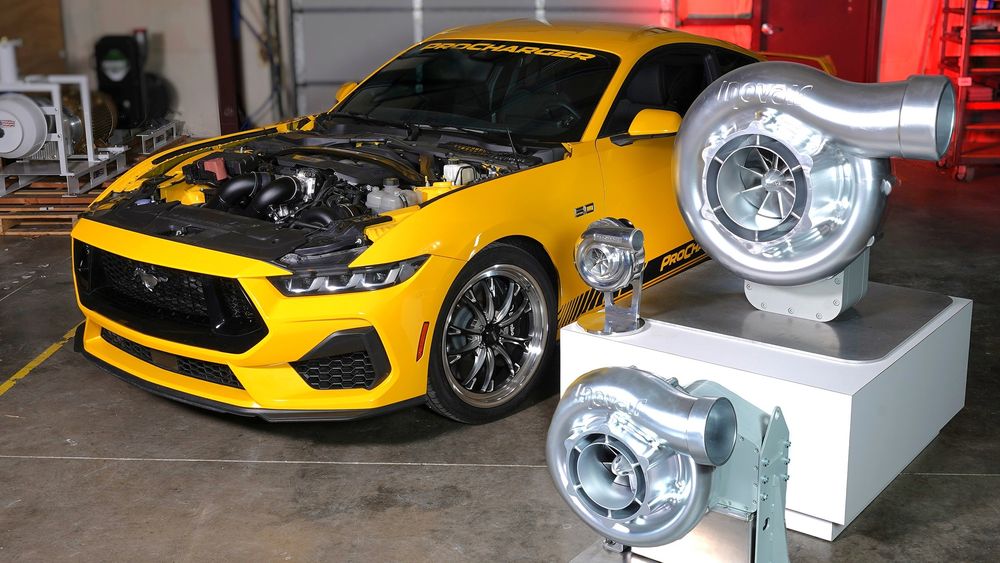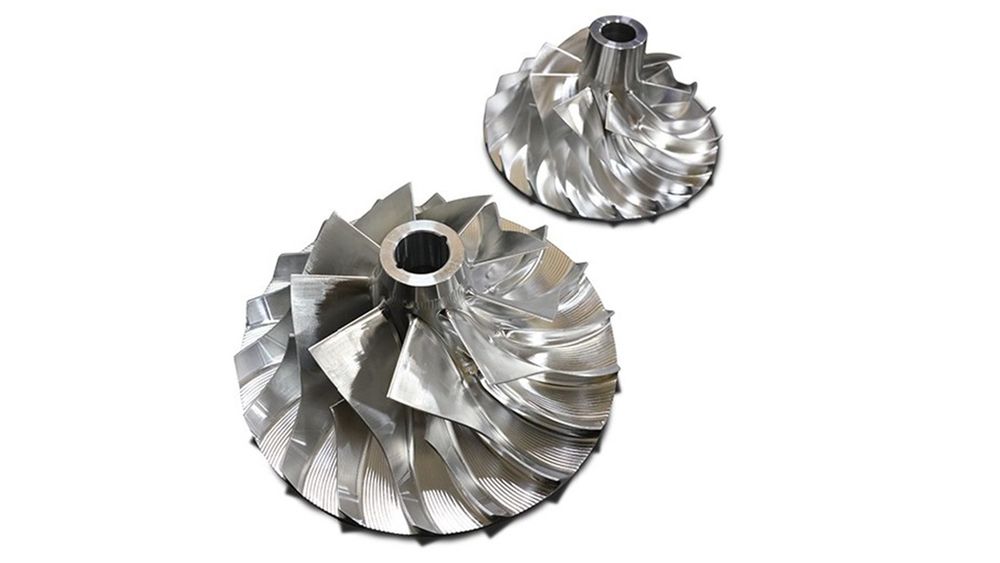Oh My! The Biggest Superchargers You’ve Never Seen
If you thought ProCharger had some big blowers, you ain’t seen nothin’ yet.
0:00 / 0:00
We almost never cover products outside the high-performance muscle car aftermarket, but when we ran across something that stopped us in our tracks, we had to say something because it’s just mind-blowing. We’ve been covering ProCharger superchargers since the very beginning when they came out with their P600B supercharger kit way back in 1994. We knew from the start that this company was different in its use of cutting-edge design and manufacturing technology, but little did we know that our dear friends at ProCharger were leading a secret life.
AI Quick Summary
ProCharger, known for muscle car superchargers, also operates as Inovair, making industrial compressors for diverse uses including military and wastewater treatment. Their tech advances in energy efficiency benefit both industrial and automotive sectors, enhancing performance and sustainability.
This summary was generated by AI using content from this MotorTrend article
Read Next
Much like Clark Kent leading a normal life in relation to his alter ego Superman, ProCharger has over the past quarter of a century led a more mundane secret life as Inovair, a company that designs and manufactures compressors for industrial use across a wide swath of diverse commercial, military, and infrastructure applications. It all came about because these guys are hardcore gearhead hot rodders who love to tinker. As a result, ProCharger (as Inovair) serves needs for wastewater treatment, aircraft ground support, and a growing number of other industrial applications. If the superchargers you see on this page look eerily similar to the ProCharger under the hood of your Mustang or Camaro—only a whole lot larger—you’d be right. When we saw them, we wondered what they could possibly be used for and how ProCharger got into this business. So we straight-up asked Ken Jones and Erik Radzins of ProCharger to spill the beans on these Brobdingnagian-sized blowers.
HOT ROD asked ProCharger CEO Ken Jones, how’d you get into that? “It’s kind of a funny story,” says Jones. “We were founded back in 1994, over 31 years ago, and in late 1997 we had an aircraft ground-support company that had deicing trucks approach us. They were looking for an air source to create a 700-mph breeze. It was a U.S. Air Force design on this nozzle that not only allows you to deice the plane more quickly, it also reduced the use of glycol by close to 80 percent. You know, glycol is poisonous, expensive, and the remediation costs are high. The EPA hates it. It was a win all the way around, and they had tried a couple other air sources. They all broke and wouldn’t live, and so they took an off-the-shelf D1 ProCharger unit. We worked with them and engineered a subassembly that mounts the supercharger underneath the bench where the operator rode at the end of the boom that extends off this truck that deices the plane. They won a U.S. Air Force contract for 400 trucks.”
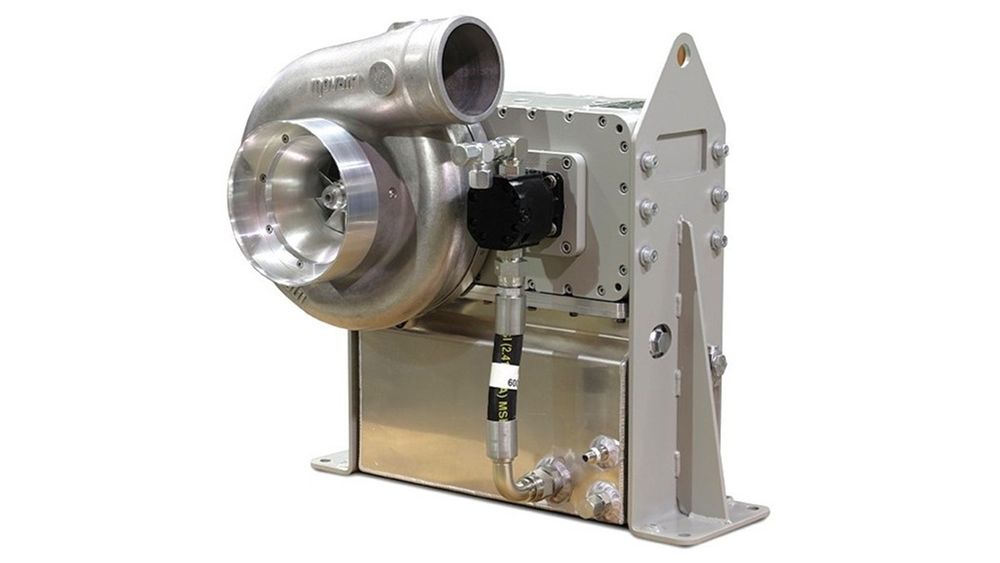
Inovair’s 2200 preconditioned air unit (PCA) supplies a high volume of air in conjunction with a portable HVAC unit that keeps the F-35's avionics at a stable temp when on the ground for maintenance.
Some compressor manufacturers in the automotive space also work parallel in the military space because the pressure and volume demands are similar, but it’s not necessarily an intuitive move for a company starting out in the automotive compressor field. Once Jones discovered ProCharger had a technological advantage in the aviation sector, it was game on. Before long, ProCharger (doing business as Inovair) had become integral to the U.S. Air Force’s F-35 joint strike fighter program, supplying the F-35 with the company’s Model 2200 preconditioned air (PCA) unit.
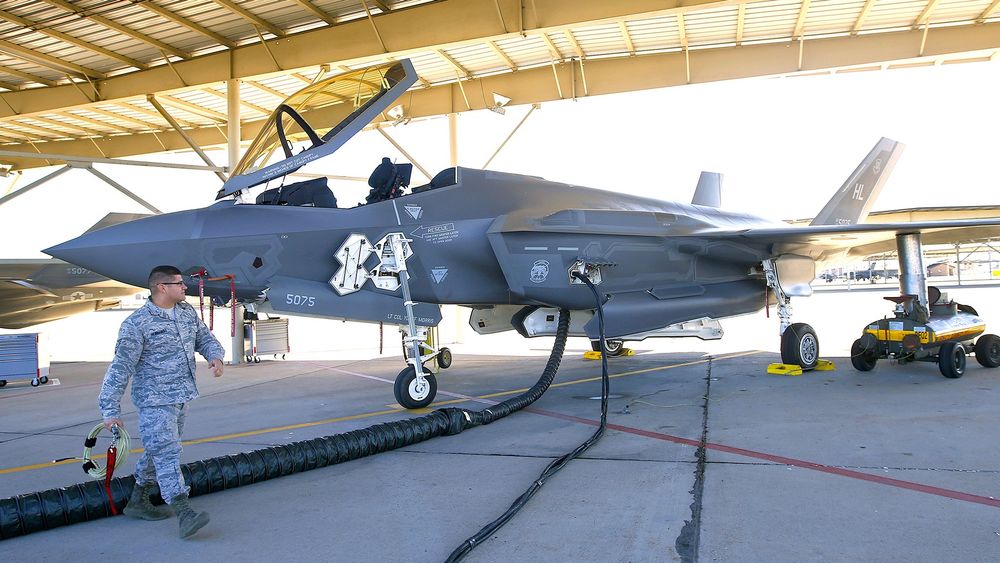
U.S. Air Force F-35 joint strike fighter connects to ground-based HVAC unit with hose fed by Inovair 2200GS compressor unit. Getty Images
Ken Jones explains: “When the plane rolls out of the hangar, they want to keep the avionics inside the plane the same temperature as in the hangar. The jet will have a cart rolling alongside it, too, that is pumping air inside of it to keep everything at a stable temperature inside the jet. You don’t know if you’re going to be at or below sea level, in a super-hot environment out in the desert or if you’re going to be at 10,000 feet in the freezing cold, and so the military testing that it had to go through to qualify for use with the F-35 is just incredible.”
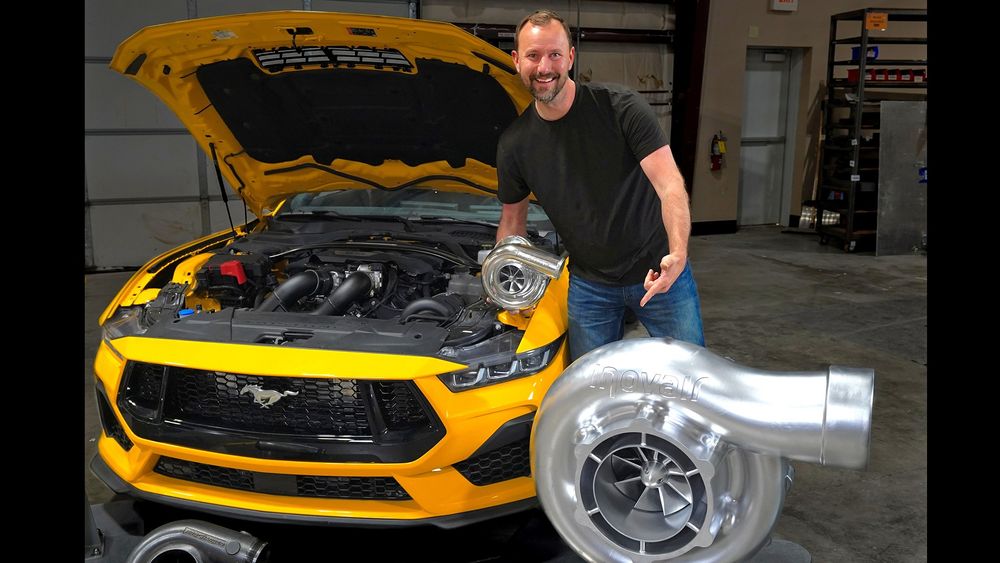
ProCharger’s Erik Radzins poses with Inovair’s largest unit—the 9400 compressor—which is used for wastewater treatment. Radzins: “That gearcase probably weighs—I mean there’s as much metal in that as a big-block Chevy. This might be what we’re making right now, but just wait ’til you see what’s coming in the future.” You’re going to have an even bigger one? “Actually, we are!”
The most impressive compressor in the Inovair arsenal is the 9400 model, which is turned by an electric motor that makes 600 hp. This giant flows up to 12,000 cfm at pressures up to 15 psi and is used solely for wastewater and clean water applications. It normally lives inside an ordinary-looking metal cabinet. Pictures of it by itself don’t do it justice, so ProCharger’s Radzins and the company’s S650 Coyote Mustang test vehicle (with a ProCharger D1X) helps put things into proper scale. Wastewater treatment plants need a copious and continuous supply of air for aeration, a process that helps the good bacteria eat the bad bacteria, making the water more sanitary before it gets filtered. ProCharger’s Jones says, “The coolest thing about this for ProCharger customers is that, in wastewater applications, clean-water applications, those blowers are designed to run continuously for 20 years, only being shut down for routine maintenance.”
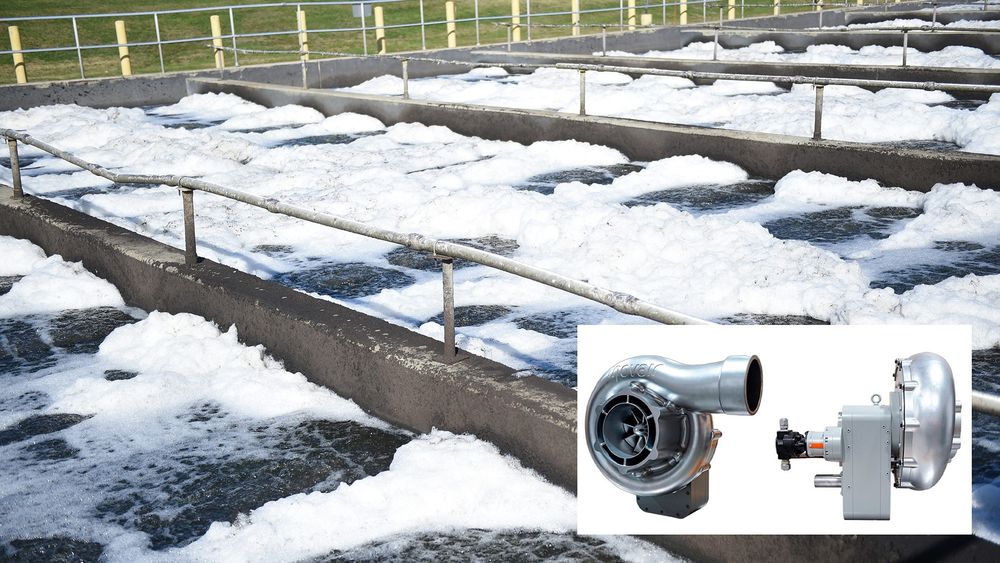
Waste-water treatment plants like this one hold untreated water in giant holding pens and pump air through effluent in a process called aeration. Inovair’s 9400 model (inset) provides continuous airflow with significant savings to rate payers through reduced energy costs.
Radzins points out that a superior compressor isn’t just about boost and volume of air, but the energy needed to move it. Whether it’s for wastewater treatment or gapping the guy in the next lane, the problem is the same. “The trickle-down effect of Inovair’s cost-saving power, saving kilowatt-hours, is being the most efficient on energy, and that actually correlates down to the racetrack where we’re trying to have an impeller that’s the most efficient design that takes the least amount of crankshaft horsepower to turn to get you down the track. Inlet air temps, too. Some of our newer-generation blowers like that F4 in the picture or the P1X, a lot of those blowers also have the lowest inlet air temperature of any supercharger out there—temps-per-psi of boost.”
Working close to the infrastructure and defense industries has had knock-on benefits to the high-performance street and race aftermarket, as well. ProCharger’s Jones: “A well-designed centrifugal is the most efficient form of compressor that you can buy in this pressure range. All the quality control infrastructure, all the expensive design software that both [ProCharger and Inovair] divisions get to use, you probably wouldn’t see that level of sophistication just for automotive, and so ProCharger is enjoying the benefits that Inovair brings with military contracts, et cetera.”
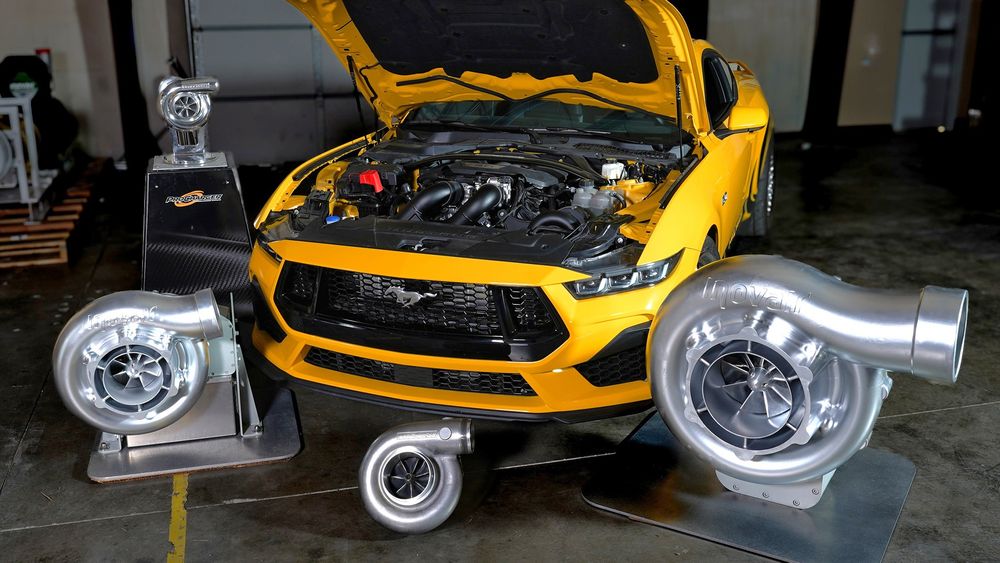
ProCharger family portrait: (from top left) ProCharger P1X, Inovair 4600, ProCharger F4X-140, Inovair 9400
Sometimes the guys at ProCharger find the uses for their Inovair blowers incredulous at times. “They use them in flour mills, cranberry bogs, shrimp farms, hydroelectric dams to help reduce cavitation, just a crazy number of applications,” says Jones. That box of Cap’n Crunch in your cupboard may have even been filled with the help of an Inovair industrial blower. On the industrial side, there’s rarely a dull moment, thanks in part to fun-loving guys at ProCharger. “We’ve got a four-building campus out of both divisions, and so there is a lot of interplay between the divisions,” says Jones. “One of the fun things is how many people in the clean-water market love ProCharger. If it’s a close enough scheduled service visit to do routine maintenance at a wastewater plant and it’s a drivable distance, the service team will drive a ProCharged truck there, and the plant staff just love it! It’s fun.”
Johnny Hunkins, born 1963, grew up mainly in Greensboro, NC. Attended Southeast Guilford High School (Greensboro) and graduated in 1981. Received a BFA degree in Art with a concentration in Design from the University of North Carolina at Greensboro (UNC-G) in 1985. The son of a music teacher and a music composer, began playing guitar at age 6, meanwhile harbored companion interests in muscle cars, model car building, NASCAR racing, and drag racing. During and after attending UNC-G, worked as an auto service writer at Montgomery Ward Auto Express. Bought a Ford Mustang LX 5.0L in 1987 which he began modifying immediately, then started contributing freelance stories to Muscle Mustangs & Fast Fords (MM&FF) in 1991. Moved to New Jersey from North Carolina and became fulltime MM&FF tech editor in the fall of 1992. Helped create, then became editor of GM High-Tech Performance (originally High-Tech Performance) magazine in 1995. While at MM&FF, invented the popular “True Street” drag racing class used by many sanctioning organizations. Moved to California in 2003 to become editor of Popular Hot Rodding magazine. In July of 2014, became editor of Mopar Muscle magazine for the rebranded TEN network. Previous and current magazine projects cars: 1987 Ford Mustang LX 5.0 (Project Excalibur), 1989 Ford Mustang LX 5.0, 1987 Buick Regal Turbo-T (2 of them), 1993 Pontiac Firebird Formula (Project Thunderchicken), 1989 Pontiac Firebird Formula 350 (Project Magnum TPI), 1994 Chevy Camaro Z 28 (The Grape Of Wrath), 1976 Chevy Camaro (Project g/28), 1968 Chevy Chevelle (Street Sweeper), 1975 Chevy Laguna S-3 NASCAR clone, 1968 Chevy Nova, and 1968 Plymouth Valiant. Other interests include fine cigars, writing and recording rock music (Hunkins is an artist on the indy label Grooveyard Records), and mid-century modern architecture and design. Hunkins lives in Desert Hot Springs, CA.
Read More
